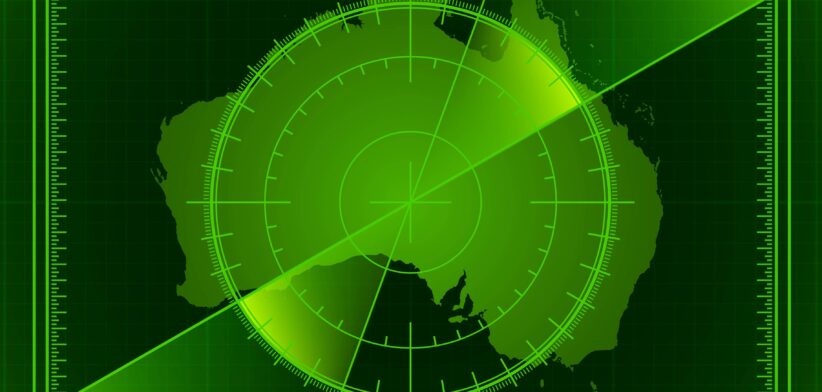National security authorities have raised the terror threat level in Australia from Possible to Probable. Read ASIO’s reasoning direct from the source.
By Mike Burgess, ASIO Director-General of Security.
Australia’s security environment is degrading. It is more volatile and more unpredictable. You have heard me say many times that espionage and foreign interference are our principal security concerns.
ASIO’s intelligence suggests that is no longer accurate. While threats to our way of life remain elevated, we are seeing an increase in extremism. More Australians are being radicalised, and radicalised more quickly.
More Australians are embracing a more diverse range of extreme ideologies, and more Australians are willing to use violence to advance their cause.
Politically motivated violence now joins espionage and foreign interference as our principal security concerns. Politically motivated violence encompasses terrorism but is broader than that.
It covers any violent act or violent threat intended or likely to achieve a political objective. This includes violent protest, riot or an attack on a politician or our democratic institutions.
Political differences, political debates and political protests are essential parts of a healthy democracy. Unfortunately, we are seeing spikes in political polarisation and intolerance, uncivil debate and unpeaceful protest.
Anti-authority beliefs are growing; trust in institutions is eroding; provocative and inflammatory behaviours are being normalised. This trend increased during COVID, gained further momentum after the terrorist attacks in Israel, and accelerated during Israel’s military response. The dynamics are raising the temperature of the security environment.
Individuals are embracing anti-authority ideologies, conspiracy theories and diverse grievances. Some are combining multiple beliefs to create new hybrid ideologies. Many of these individuals will not necessarily espouse violent views, but may still see violence as a legitimate way to effect political or societal change.
All this creates a security climate that is more permissive of violence. As polarisation, frustration and perceived injustices grow, ASIO anticipates an increase in politically motivated violence – including terrorism – across all ideological spectrums. Attacks are likely to occur with little to no warning and will be difficult to detect.
An escalation of the conflict in the Middle East, particularly in southern Lebanon, would inflict further strain, aggravating tensions and potentially fuelling radicalisation.
As you would expect, ASIO keeps the national terrorism threat level under constant review.
In 2022, we lowered the terrorism threat level. We stand by that decision. Our counter-terrorism case load was moderating. After the collapse of the caliphate, we were investigating fewer extremists with the intent and capability to conduct an attack onshore.
At the time, though, I said, “I can almost guarantee [the threat level] will need to go up again at some point in the future.”
That point is now.
After careful consideration and consultation, ASIO is raising Australia’s national terrorism threat level from POSSIBLE to PROBABLE.
Our decision reflects the degrading security environment. A threat level of PROBABLE means we assess there is a greater than fifty per cent chance of an onshore attack or attack planning in the next twelve months. It does not mean that we have intelligence about current attack planning or an expectation of an imminent attack.
Decisions of this kind are not taken quickly or easily.
The subject matter experts in the National Threat Assessment Centre use intelligence and employ structured analytical techniques to test, retest and contest their assumptions.
Our decision is not a direct response to the tragic events in the Middle East.
At this stage, we do not believe any of the terrorist plots we have investigated in the last year have been directly inspired by Gaza. Terrorist leaders are not inspiring attacks onshore. This is why we did not raise the threat level in the immediate aftermath of October 7.
Indirectly, though, there have been important and relevant impacts. The conflict has fuelled grievances, prompted protest, exacerbated division, undermined social cohesion and elevated intolerance.
After October 7, I warned that inflamed language could lead to inflamed community tensions. Unfortunately, this is what is playing out.
Because of these complex dynamics, it would also be inaccurate to suggest the next terrorist attack or plot is likely to be motivated by a twisted view of a particular religion or a particular ideology. The threat is across the board.
In the last four months, there have been eight attacks or disruptions that either involved alleged terrorism or are being investigated as potential acts of terrorism.
I cannot comment on the cases in detail, but will note they all appear to underscore four core characteristics of the current counter-terrorism landscape:
- First, the threat from lone actors. The most likely terrorist attack involves an individual or small group, using rudimentary weapons such as a knives, improvised explosives or a gun.
- Second, the acceleration of radicalisation. Individuals are moving to violence with little or no warning, and little or no planning. Acts of violence can be almost spontaneous or purely reactive.
- Third, a resurgence in the number of minors embracing violent extremism. In the recent cases, the oldest alleged perpetrator was 21, the youngest was 14. Extremist ideologies, conspiracies and mis-information are flourishing in the online ecosystem, and young Australians are particularly vulnerable.
- Finally, the diverse drivers of extremism. When we last raised the threat level, individuals were often being radicalised by sustained exposure to a particular extremist ideology, or by an authority figure. Now, individuals are being motivated by a diversity of grievances and personalised narratives. In some of the cases I referred to, the alleged perpetrators appear to have been motivated by extreme religious beliefs; in others by nationalist and racist beliefs.
These factors make ASIO’s job more difficult. Threats are becoming harder to predict and identify.
The drivers of radicalisation, grievance and extremism are growing and interacting in ways we have not seen before, creating a security climate that’s very different to the one that existed when we last raised the threat level.
The challenge is exacerbated by the internet and social media, the primary platforms for radicalisation, and the use of encryption by every single one of our investigative subjects.
It is important to put all this in context, though.
The threats I am describing are significant but not insurmountable. PROBABLE does not mean inevitable.
Australians should be aware, but not afraid.
If you believe a person you know is going is down a dark extremist path, please talk to someone about it and consider calling the National Security Hotline on 1800 123 400.
ASIO and our law enforcement partners are working hard to detect terrorist threats and are well-practiced at defeating them. Since 2014 together we have successfully disrupted 24 attacks.
The organisation I lead will continue to do what we have been successfully doing for 75 years: protecting Australia and Australians from threats to their security.








